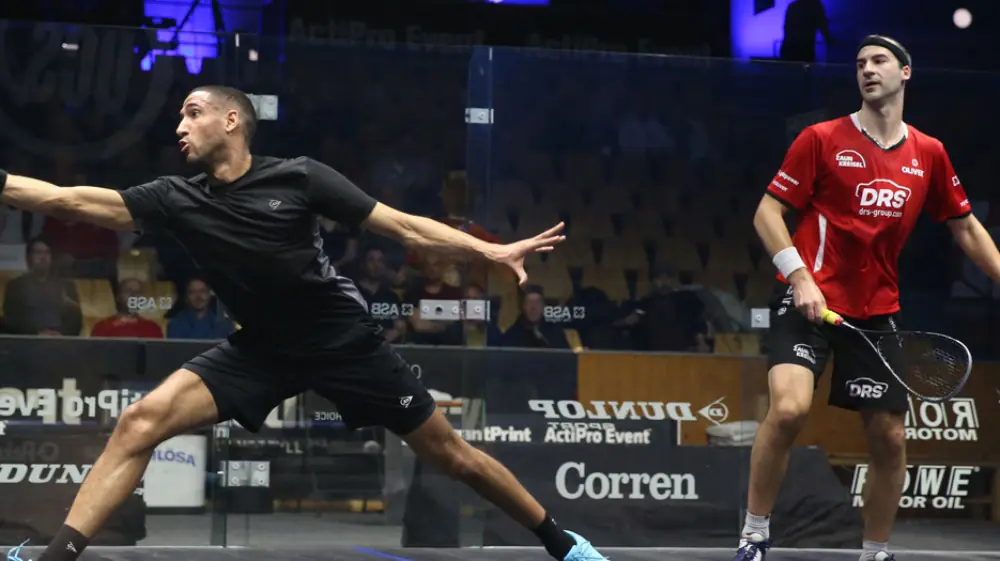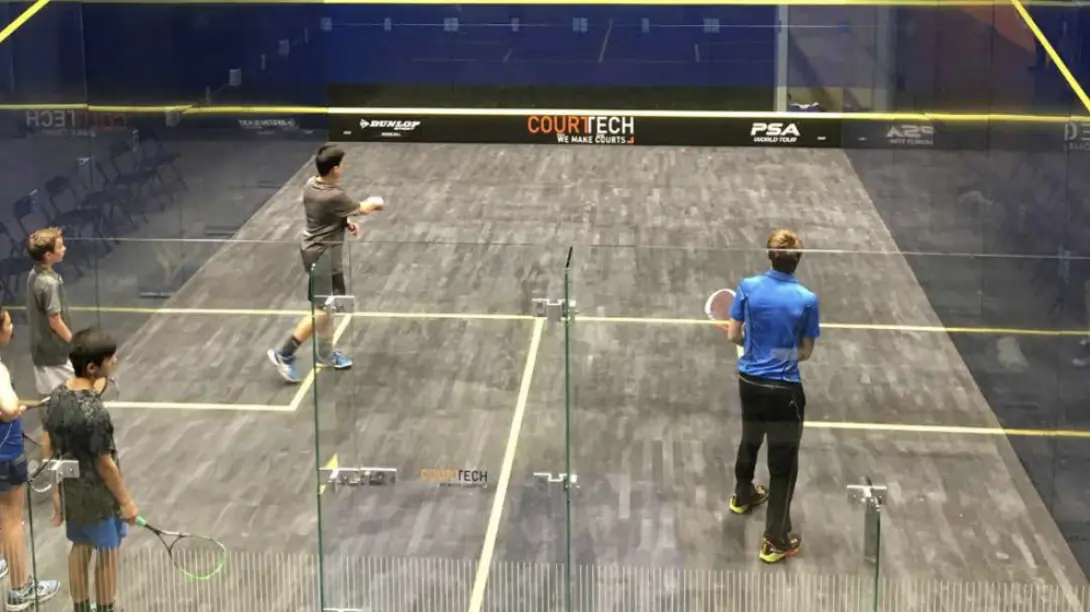14 November 2022 / 3-Min Read / Translate
The phrase itself gives the impression of a very detailed and clear objective for each rally, almost as if the player is trying to hit something like “12 deep shots, 4 volleys, 2 short shots and at least one disguised swing, followed by getting their opponent 2 metres behind them and slightly late”!
Nobody can construct a rally when both players levels are similar. If a professional player were to play the average club player, then yes, the pro could be in complete control. During a rally they can wait until the club player has run around the court a lot and is a terrible position, before playing their killer shot.
Yes, they could probably hit a winner from almost any shot, but it has become a habit to not simply gone for the winner each time because that doesn’t win matches and also because I think all squash players have a streak of sadism inside them and enjoy watching their opponent run around in total disarray. I also happen to feel that squash players have a streak of masochism inside us because we seem to enjoy being run around!

A bad gameplan is probably better than no game plan
At its core, I feel it’s “Patience combined with tactics”. I mention about not going for winners at the first opportunity and to newer players that concept might seem crazy. Why wouldn’t a player want to win the rally as quickly and as easily as possible? The problem is that hitting winners is not as easy to do as it is to say. But more importantly creating opportunities AND selecting the RIGHT opportunity is a mindset skill that cane learnt and improved.
So how might it work in reality then? Well, if I were working with a player, we would have identified their strengths and weaknesses, and during practice sessions, specifically practice rallies, I would watch and if I felt a player has tried to hit a winner from the wrong position, I would shout STOP! and ask “Why?”. The player then has to justify or explain why that shot was chosen to hit a winner from. It can be a harsh way to teach a player because they always think they are right and sometimes it’s not until they see the video that they agree most times they chose the wrong shot.
That’s great if you are having coaching and the coach is watching, but what if you don’t have a coach? How can you teach yourself rally construction, or to phrase it another way, how can you learn to be more patient? Well, the first thing to consider is your gameplan. If you don’t have a gameplan, can you really have rally construction? Maybe but each shot will be quite random, without a clear goal in mind.

Playing 3/4 court can help with your patience
A gameplan doesn’t have to be a complicated decision tree, it can be something as simple as “play to the back 10 times before hitting short“. You might use that because your opponent lacks fitness or because you lack patience. It’s not a perfect gameplan, but it’s better than nothing! So now you have something to think about when playing your shots, your rally construction is based around your gameplan. It’s waiting for the right and clear opportunity to hit the ball to the place you need it – the place where your opponent doesn’t want it.
One last point to make. A gameplan doesn’t have to mean hitting short. Perhaps your opponent is very fast to the front and your short shots are not very good, in which case, your gameplan might simply be “keep your opponent behind you”. That might be enough to win more points that your lose. The rally construction in this case would be stopping yourself from hitting short just because you can.
There’s too much jargon and technospeak in all aspects of life. In general, squash has managed to avoid that sort of thing, but every now and again a phrase because popular that makes the user sound intelligent and perceptive. They might be, but just using a phrase doesn’t make it so.
When using the phrase “Rally Construction” it simply means not playing each shot as an individual shot. It means having some sort of gameplan that you believe will work based on your strengths and weaknesses and your opponents strengths and weaknesses. It means waiting for the right time to hit a winner in a rally not the first time. How do you know the difference? Experience and purposeful practice.
Anyway, I hope that has helped. Remember, I love to hear from readers, so send me an email with your thoughts.